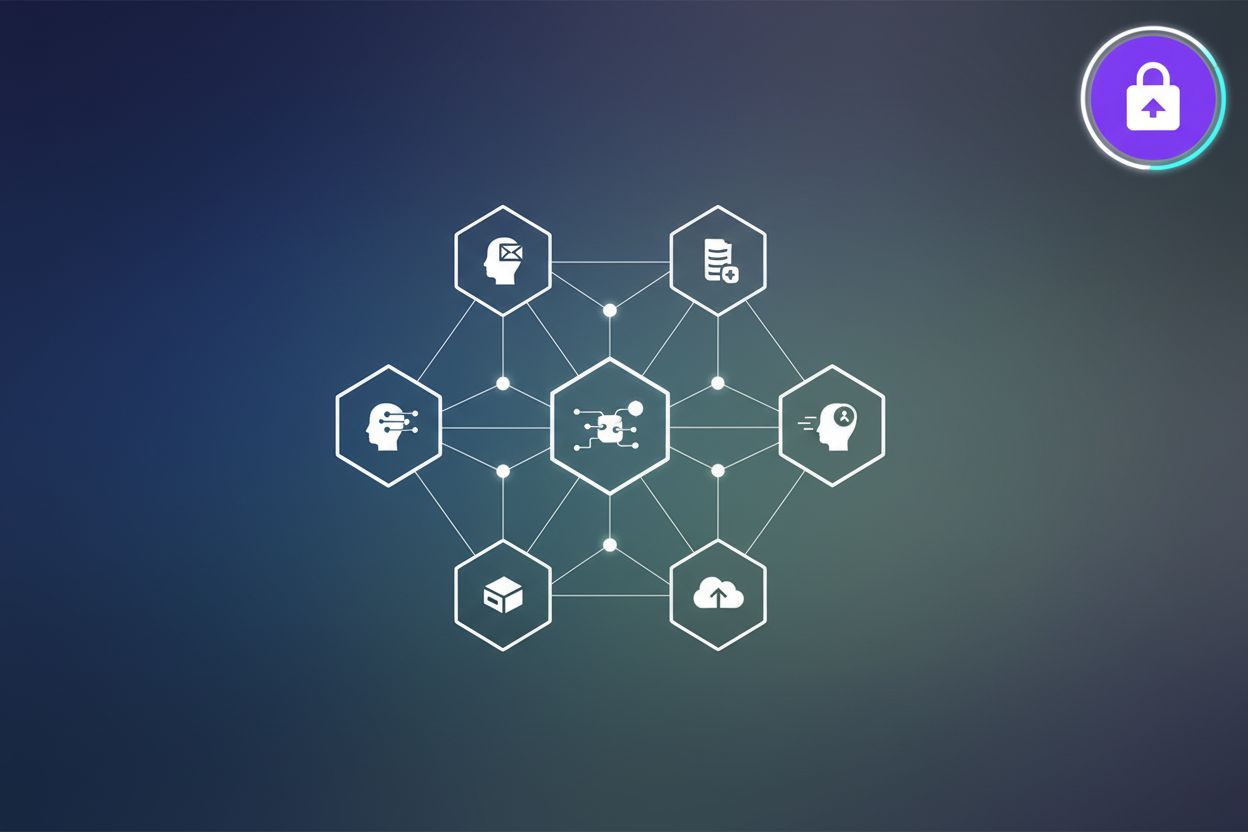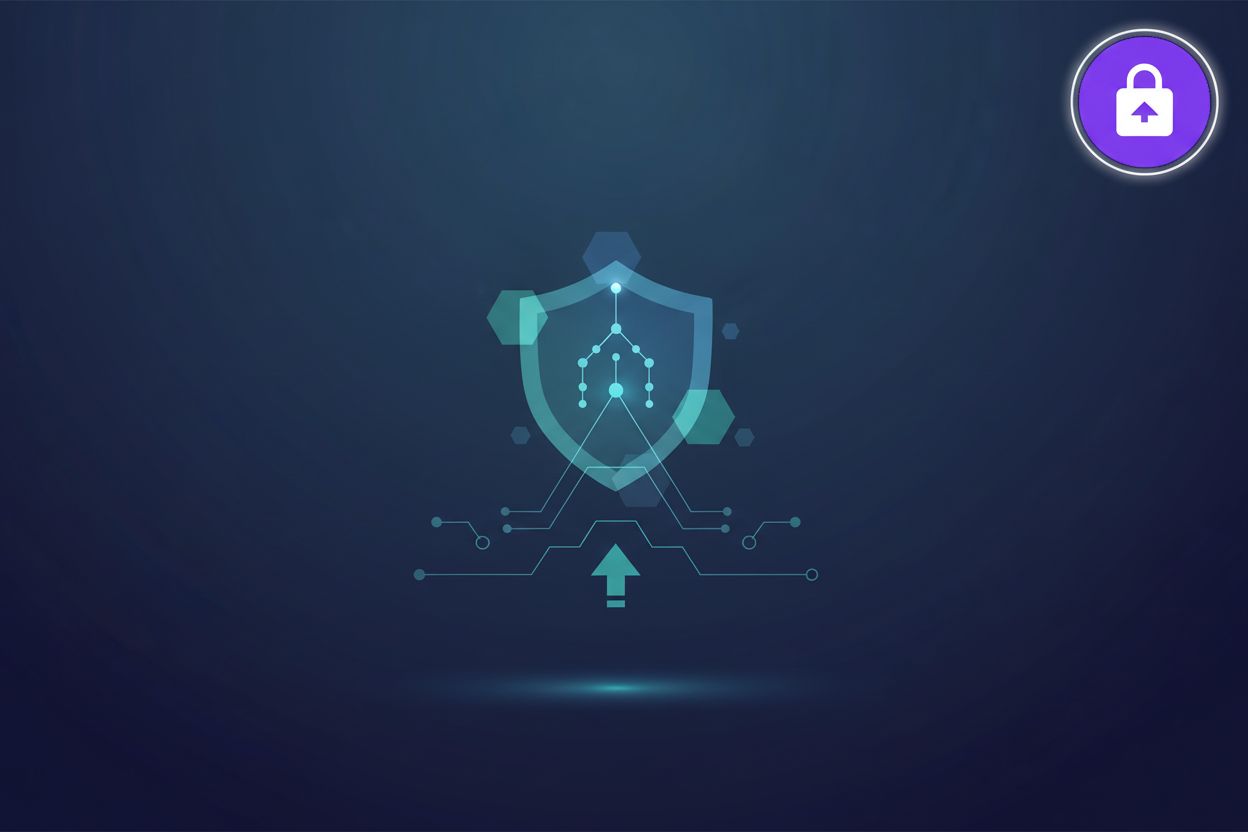Beyond Passwords: Architecting Centralized Authentication for Modern Apps
TL;DR
The Case for Centralized Authentication: Why Bother?
Okay, so why should you even care about centralized authentication? Well, let me tell you a quick story – I once worked at a place where every app had its own login. It was password madness!
User Frustration Central: Imagine having a different username and password for every single application you use at work. It's not just annoying; it's a productivity killer, right? (The productivity killer no one talks about: task shame - Reddit) Think about healthcare, where doctors need access to multiple systems, from patient records to billing. Or retail, where employees juggle POS systems, inventory management, and customer databases. Different logins everywhere!
Security Nightmare: When authentication is all over the place, security kinda goes out the window. (My Windows Security SIgn in keeps popping up even after entering ...) Each system is a potential point of failure. (Single point of failure - Wikipedia) Scattered systems increase security vulnerabilities. It's like having a bunch of doors with different locks – some rusty, some brand new. None of them talk to each other, and some are easier to pick than others.
Maintenance Headache: Keeping all those authentication systems running smoothly? Forget about it. Updating security protocols, patching vulnerabilities – it's a never-ending job that drains resources.
Now, think about the flip side. Centralized authentication...it's kinda like magic.
Simplified User Management: Imagine a single source of truth for all your users. Add, remove, or update user access in one place, and it propagates everywhere. no more manually updating user profiles across multiple systems.
Enhanced Security: With a centralized system, you can enforce consistent security policies across all applications. Multi-factor authentication (mfa), strong password requirements, regular security audits – they all become easier to implement and manage. Plus, you can monitor login activity across the board, making it easier to detect and respond to threats.
Reduced Costs: Centralized authentication saves time and money. Developers don't have to build and maintain their own authentication systems. Security teams can focus on protecting a single, well-defined system. And users spend less time dealing with login issues.
So, yeah, that's why you should bother.
Core Architectural Patterns for Centralized Authentication
Alright, so you're thinking about how to actually build this centralized authentication thing? Cool, lets dive into some common patterns.
Think of single sign-on (sso) as the granddaddy of centralized authentication. It lets users access multiple applications with just one set of credentials. It works by establishing a trust relationship between an identity provider (idp) and various applications. The idp verifies the user's identity, and then the applications trust the idp's assertion.
- How it Works: A user tries to access an application. If they're not authenticated, the application redirects them to the idp. The user logs in at the idp, and the idp sends back a security token to the application, granting access.
- Pros and Cons: sso improves user experience and reduces password fatigue. However, it can be a single point of failure, and implementation can be complex.
- Popular Protocols: saml, oauth 2.0, and openid connect are common protocols for implementing sso.
- SAML (Security Assertion Markup Language): Primarily used for enterprise single sign-on (SSO) between different organizations or between an organization and its cloud services. It's more focused on exchanging authentication and authorization data.
- OAuth 2.0: An authorization framework that allows users to grant third-party applications limited access to their data without sharing their credentials. It's often used for delegated access, like "Log in with Google."
- OpenID Connect (OIDC): Built on top of OAuth 2.0, OIDC adds an identity layer. It's used for authentication and provides basic profile information about the user. It's the de facto standard for modern web and mobile SSO.
api gateways act as a gatekeeper for your microservices. They sit in front of your api's and handle authentication and authorization before routing requests to the appropriate service.
- Role in Authentication: The api gateway verifies the user's identity and checks if they have the necessary permissions to access the requested resource.
- Benefits for Microservices: api gateways simplify authentication for microservices by offloading the responsibility to a central point. This reduces code duplication and improves security.
- Example Implementations: Popular api gateway solutions include nginx, Kong, and Tyk.
Identity as a Service (IDaaS) is essentially a cloud-based solution that manages digital identities and their access to various applications and resources. Think of it as outsourcing your identity and access management (IAM) to a specialized provider.
- Role in Centralized Authentication: IDaaS platforms provide a centralized hub for managing user identities, authentication, and authorization. They often support multiple authentication protocols (like SAML, OAuth 2.0, OIDC) and integrate with a wide range of cloud and on-premises applications. This means you don't have to build and maintain your own complex identity infrastructure.
- Benefits:
- Reduced Complexity: IDaaS providers handle the underlying infrastructure, security updates, and maintenance, freeing up your IT team.
- Faster Deployment: You can often get up and running with an IDaaS solution much quicker than building an in-house system.
- Scalability: Cloud-based solutions are inherently scalable, adapting to your organization's growth.
- Enhanced Security: Reputable IDaaS providers invest heavily in security, often offering advanced features like adaptive authentication and threat detection.
- Cost-Effectiveness: For many organizations, especially smaller to medium-sized ones, IDaaS can be more cost-effective than managing an on-premises IAM solution.
- How it Fits: IDaaS solutions often act as the central identity provider (IdP) in an SSO architecture. They manage user accounts, enforce authentication policies (like MFA), and issue security tokens that applications trust. This allows users to log in once and access multiple applications seamlessly.
Implementing Centralized Authentication: A Step-by-Step Guide
Alright, so you've picked your protocol and got your server humming...now what? Time to get your apps talking! It's not as scary as it sounds, promise.
- Client Libraries are Your Friends: Seriously, don't try to build this from scratch. Most languages have libraries that handle the heavy lifting of interacting with your authentication server. For example, in Python, you might use something like the
requests-oauthliblibrary to handle oauth flows. These libraries abstract away a lot of the complexity, like token management and request signing.
from requests_oauthlib import OAuth2Session
client_id = 'YOUR_CLIENT_ID'
client_secret = 'YOUR_CLIENT_SECRET'
authorization_base_url = 'https://your.auth.server/authorize'
The token_url is where your authorization server issues access tokens after a user has authorized your application.
It's a crucial endpoint in the OAuth 2.0 flow.
token_url = 'https://your.auth.server/token'
oauth = OAuth2Session(client_id, redirect_uri='https://your.app/callback')
authorization_url, state = oauth.authorization_url(authorization_base_url)
print('Please go to %s and authorize access.' % authorization_url)
redirect_response = input('Paste the full redirect URL here:')
token = oauth.fetch_token(token_url, client_secret=client_secret,
authorization_response=redirect_response)
print(token)
jwt Juggling (JSON Web Tokens): Authentication servers typically issue jwts after a successful login. These tokens are like digital passports that your application can use to verify the user's identity. Your app needs to store these tokens securely.
- HTTP-Only Cookies: These cookies are only accessible by the web server, not by client-side JavaScript. This makes them a good choice for storing sensitive tokens like JWTs because it mitigates the risk of cross-site scripting (XSS) attacks stealing the token. However, they can be vulnerable to cross-site request forgery (CSRF) attacks if not properly protected.
- Local Storage: This is a browser-based storage mechanism accessible by JavaScript. While convenient for client-side applications, it's more susceptible to XSS attacks. If an attacker can inject malicious JavaScript into your page, they can potentially read and steal tokens stored in local storage.
The choice between them often depends on your application's architecture and security posture. For web applications, http-only cookies are generally preferred for their enhanced protection against XSS.
Authorization Policies: Who Can Do What? Authentication is just the first step. Authorization determines what a user is actually allowed to do. Implement role-based access control (rbac) or attribute-based access control (abac) to define granular permissions. For example, in a healthcare app, a doctor might have access to patient records, while a nurse might only be able to view vital signs. And the billing department? They probably shouldn't be seeing any patient data directly.
Think about a financial institution. They might use client libraries in Java and .NET to integrate their web and mobile banking applications with a central authentication server (which often also acts as an authorization server in many OAuth 2.0 implementations). These apps would then use jwts to authorize transactions and access account information. It's all about making sure the right people have the right access, and that no one's peeking at things they shouldn't.
Advanced Topics: Security, Scalability, and AI-Powered Optimization
Okay, so you've built this awesome centralized authentication system...but how do you keep it secure, make it scale, and, like, not be a total pain to manage? Buckle up, because that's where the real fun begins.
Fortifying Your Defenses: Security and MFA
Seriously though, if you're not using mfa, what are you even doing? I mean, passwords alone? That's like relying on a screen door to keep out a hurricane. mfa adds extra layers of protection, making it way harder for bad actors to waltz in, even if they do snag a password.
- Implementing mfa for centralized authentication is pretty crucial. It makes sure that even if a password gets compromised, the attacker still needs that second factor – something they have, like a phone or a hardware token. Think about it: even if they manage to guess or steal your password (yikes!), they still need access to your phone to get that verification code.
- Types of mfa factors? Oh, there's a bunch! You got your classic sms codes (though those aren't the most secure anymore, tbh), authenticator apps like Google Authenticator or Authy, and even hardware tokens like YubiKeys. Each has it's own tradeoffs.
- Best practices for mfa deployment? Roll it out gradually, educate your users (seriously, educate them – don't just spring it on 'em!), and make sure there's a backup plan in case someone loses their phone.
Handling the Rush: Scalability Strategies
So, your app is blowing up? Congrats! But that also means your authentication system is about to get hammered. Here's how to keep it from face-planting:
- Caching Authentication Tokens: Caching authentication tokens is a no-brainer. Instead of hitting the authentication server every single time, your app can store those jwts locally and verify them quickly. Redis or Memcached are your friends here.
- Distributed Session Stores: Using a distributed session store is another key. Don't rely on a single server to store session data. Spread it out across multiple servers so that one server going down doesn't bring the whole thing crashing down.
- Load Balancing Authentication Servers: Load balancing authentication servers is essential. Distribute traffic across multiple authentication servers to prevent any single server from getting overloaded.
Getting Smarter: AI-Powered Optimization
ai isn't just for self-driving cars and robot overlords, you know? It can also make your authentication system smarter and more secure.
- Fraud Detection: Using ai to detect and prevent fraudulent logins is a game-changer. ai can analyze login patterns, device information, and location data to identify suspicious activity. If something looks fishy, like someone logging in from Russia when they usually log in from the US, the ai can flag it for review or even block the login attempt altogether. Common techniques include anomaly detection algorithms (like Isolation Forests or One-Class SVMs) and machine learning models trained on historical fraud data. Data sources typically include user behavior logs, device fingerprints, and geolocation data.
- Personalization: Personalizing the authentication experience with ai is cool too. Imagine an authentication system that adapts to each user's behavior. If someone always logs in from the same device and location, the system might skip the mfa prompt. But if they log in from a new device or location, it'll require mfa to be extra safe. This can involve user profiling and reinforcement learning to dynamically adjust security measures.
- Failure Prediction: Predicting and preventing authentication failures? Yup, ai can do that too. By analyzing system logs and performance metrics, ai can identify potential bottlenecks and predict when the authentication system is likely to fail. This gives you time to fix the issue before it causes a major outage. Techniques like time-series forecasting and predictive maintenance models can be employed here.
Keeping Tabs: Logging and Compliance
Alright, you've got your fancy centralized authentication system up and running. Now you need to keep an eye on it.
- Importance of Logging: Huge! Every login attempt, every access request, every error – log it all. This data is invaluable for troubleshooting problems, detecting security threats, and complying with regulations.
- SIEM Systems: Using security information and event management (siem) systems like Splunk or ELK Stack is a must. These tools can collect and analyze logs from all your systems, making it easier to identify and respond to security incidents.
- Compliance Requirements: Don't forget about those! Depending on your industry and location, you might need to comply with regulations like gdpr, hipaa, or pci dss. Make sure your authentication system meets all the necessary requirements.
So, there you have it. Centralized authentication isn't just about making life easier for your users (though it definitely does that!). It's about building a more secure, scalable, and manageable system that can keep up with the demands of modern applications. It ain't always easy, but trust me, it's worth it.





